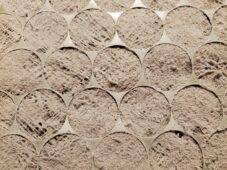Dirt vs Mold vs Mildew: How To Tell The Difference (And What To Do)
At first glance, that mysterious dark spot on your wall or shower tile might just look like dirt. But then you worry, what if it’s mold? Or mildew? The truth is, these three can look surprisingly similar, but they mean very different things for your home and health. Knowing how to tell them apart can save you time, money, and maybe even a few headaches down the road. Here’s the easiest way to spot the difference.
Start With What Dirt Looks Like

Dirt is usually just that: dirt. It’s surface-level, gritty, and easy to wipe away. It doesn’t grow or spread on its own, and it won’t have much of a smell. If a damp cloth takes it off without much effort, you’re probably in the clear. The only exception? Dirt can stick to textured or damp surfaces, which sometimes makes it look like something worse than it is.
What Mildew Looks Like

Mildew is like mold’s cousin who shows up first to warn you that trouble’s coming. It’s typically gray, white, or light brown and has a powdery or fuzzy texture. You’ll usually find it on bathroom walls, shower curtains, or windowsills, all places that stay humid. The good news is, mildew is fairly easy to clean. A mix of vinegar or diluted bleach usually wipes it right out.
What Mold Looks Like

Mold tends to grow darker and deeper, often appearing black, green, or even orange. Unlike dirt or mildew, mold sinks into porous materials like drywall or wood. It can smell musty and earthy, and wiping it won’t make it disappear completely. If you see mold returning after you’ve tried to clean it, it’s a sign the spores have taken hold beneath the surface, and that’s when it’s time to act fast.
The Smell Test

If you’re unsure what you’re looking at, use your nose. Mold has a distinct, damp, earthy smell that’s hard to miss once you’ve smelled it once. Mildew might smell a little stale, like wet fabric left too long in the washer. And dirt usually doesn’t smell at all. While it’s not the most pleasant method to use to solve the case, your nose can often tell you what your eyes can’t.
Check The Surface It’s On

Dirt sticks anywhere, but mildew and mold have favorite spots. Mildew grows on smooth, damp surfaces like tile or glass, while mold prefers porous materials like drywall, wood, or carpet. If the stain seems to grow back after you’ve cleaned it or spreads quickly, you’re probably dealing with mold, not dirt. Seeing what the dirt or stain is growing on can tell you a lot about what you’re dealing with.
How To Safely Clean Each One

For dirt, soap and water will do the trick. Mildew needs a little more power, but a vinegar solution or bathroom cleaner works fine. But mold? That depends on the size. Small spots can sometimes be treated with diluted bleach, but larger patches need professional help. Mold spores can spread through the air and cause health issues if not handled properly. So its better to be cautious than to take your chances.
Preventing Future Growth

Mold and mildew thrive in moisture, so the best way to stop them is by keeping things dry. Run exhaust fans in the bathroom, fix leaks quickly, and don’t let damp towels pile up in one place. In basements or humid areas, a dehumidifier works wonders to keep mold away. And of course, keeping your home well-ventilated helps, too. Once you remove the source of the moisture, the chances of mold or mildew returning drop dramatically.
When To Call In A Professional

If you clean a spot of mold and it keeps coming back, or it covers a large area, it’s time to bring in an expert. Professionals can test the air, find hidden growth, and remove it safely. Trying to fix major mold problems yourself can make things worse. Sometimes peace of mind is worth the call, as mold is a problem that’s better to solve properly than keep guessing.
Related Articles
-How To Test Your Home For Mold (And How To Get Rid Of It)
-5 Simple and Easy Ways to Clean Grout and Get Rid of Mold
-Easy DIY Solution For Exterior Mildew Build-Up
It’s easy to mistake mold, mildew, or dirt for one another, especially when they all show up in the same spots. But a little attention and a few smart cleaning habits can keep your home healthy and clean. If something feels off or smells strange, don’t ignore it. Start small, stay consistent, and when in doubt, get help. A clean home isn’t just about looks, it’s about feeling safe and at ease in your space.









